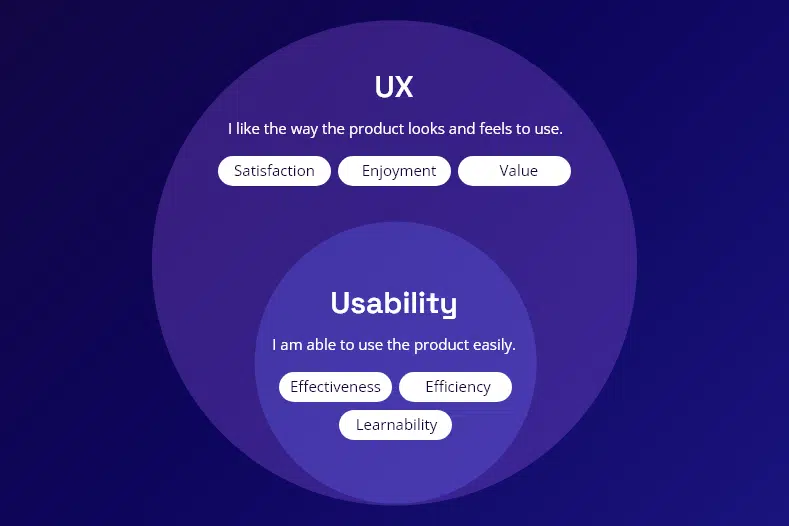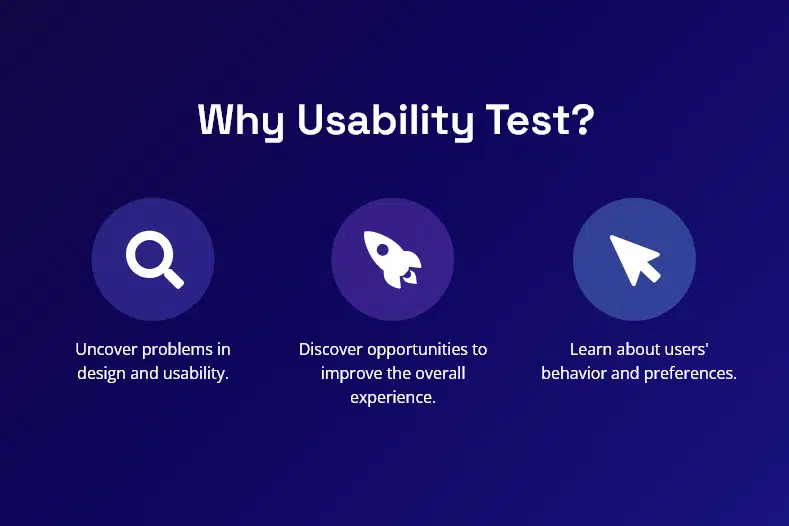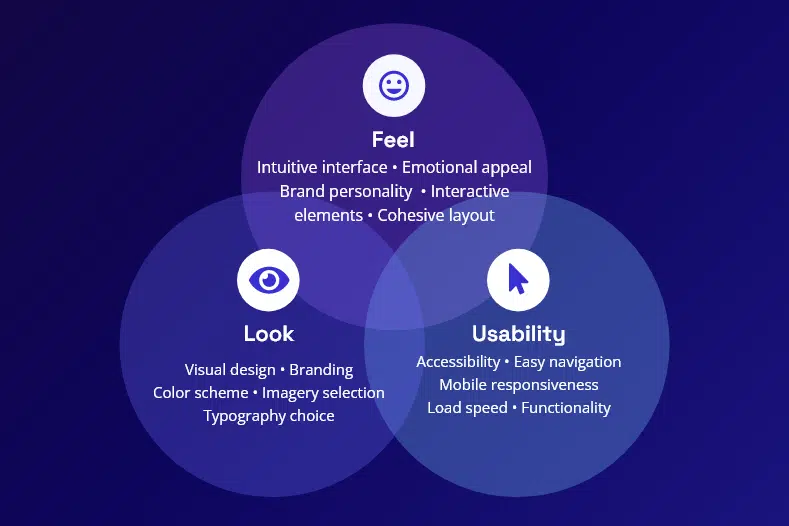So, you’ve probably heard the terms “usability” and “user experience” thrown around a lot, especially when it comes to designing websites or apps. But what do they really mean? And why are they so important for your online presence? Let us break it down for you.
 Chrisa
Chrisa

When you’re crafting a website, app, or any product, your primary aim is to fulfil your user’s requirements, right? However, achieving this involves more than just ensuring usability. You also strive for convenience, accessibility, aesthetics, uniqueness, value, delight, and various other qualities. Why? Because mere ease of use doesn’t guarantee a satisfying user experience. With users becoming increasingly demanding in their online interactions and technologies growing more complex, ensuring usability becomes inherently challenging.

Now, let’s start with the basics. Usability is all about how easily your users can achieve their goals when using your website or app. It’s like the backbone of a good digital experience. Think of it as the efficiency and effectiveness of your product. Can your visitors navigate through your site without getting lost? Can they find what they need quickly and without frustration? That’s usability in action.
On the other hand, user experience (UX) is a bit broader. It’s not just about how well your website functions; it’s about how your users feel while interacting with it. It encompasses everything from the look and feel of your site to the emotions it evokes in your visitors. UX is about creating a seamless, enjoyable journey for your users from start to finish. Now, let’s dive a bit deeper into each concept.
Usability is like the nuts and bolts of your website. It’s about making sure everything works smoothly and efficiently. When your site has good usability, users can easily complete tasks like making a purchase, signing up for a newsletter, or finding information they need. It’s all about removing obstacles and making the user experience as straightforward as possible.
Imagine you’re shopping online for a new pair of shoes. You find the perfect pair, but when you try to add them to your cart, the button doesn’t work. Frustrating, right? That’s a usability issue. It’s a roadblock that prevents users from completing their goal. To ensure good usability, you need to put yourself in your users’ shoes. What are they trying to accomplish on your site? What barriers might they encounter along the way? Usability testing is a great way to uncover these issues and make improvements to your site.
“Website Testing allows you to assess your website’s functionality and appearance across different browsers, browser versions, and operating systems (as well as multiple devices and geolocations).” – Source: www.semrush.com

User experience is a bit harder to pin down because it’s more subjective. It’s about how your users perceive and feel about your website or app. Do they enjoy using it? Does it make their lives easier? Do they feel satisfied with the overall experience?
Think of user experience as the sum of all the parts that make up your digital presence. It’s not just about functionality; it’s also about aesthetics, emotions, and brand perception. A website with great UX not only works well but also leaves a lasting impression on its users.
Imagine you visit a website that’s beautifully designed, easy to navigate, and full of helpful content. You enjoy your time on the site, and you leave feeling satisfied and informed. That’s a positive user experience. To create a great user experience, you need to consider every aspect of your website, from the layout and typography to the tone of voice and color scheme. It’s about creating a cohesive, enjoyable experience that delights your users at every touchpoint.

➡️ When your website is easy to use, people stick around longer, understand your offerings better, and are more likely to become customers. Read more here: What is UX Optimization?
While usability and user experience are closely related, they’re not the same thing. Usability focuses on the practical aspects of using a website or app, while user experience is more about the overall impression it leaves on your users.
Basically, usability is a prerequisite for a good user experience. If your site isn’t easy to use, it doesn’t matter how beautiful or innovative it is—it’s not going to provide a positive experience for your users. Usability lays the foundation for a great user experience by ensuring that your site functions as intended and meets the needs of your users.
In conclusion, both usability and user experience are key to designing a great website or app. So, when you’re planning a web redesign or building a UX-friendly site, remember to optimize your content and tackle common UX problems. By evaluating user experience early on, you can spot and fix issues before they become bigger problems, while using good UI examples can give you practical tips to improve your design. Ultimately, having a clear website roadmap helps ensure that every part of your site contributes to a positive user experience. Stay tuned for our next blogs, where we’ll discuss further these topics!
➡️Check out our blog post for more UX tips and insights on how to optimise your website for success.
Wondering if your website is optimized for the best user or customer experience? Don’t sweat it! Reach out to us, and we’ll conduct a comprehensive audit for you, absolutely free. Our team will analyze every aspect of your website to uncover areas for improvement and provide you with a detailed report highlighting our findings. So why wait? And if you have any questions about usability, user experience, or anything else related to digital marketing, feel free to reach out. Once again, we’re always here to help!
Usability pertains to task completion, while user experience encompasses the entire journey, including emotions and perceptions.
Yes, usability is a foundational component of UX, but UX extends beyond usability to include subjective factors.
Usability is defined by ISO 9241–11, focusing on task effectiveness, efficiency, and satisfaction, while user experience is outlined in ISO 9241–210, encompassing perceptions and responses.
Customer experience (CX) is broader, covering interactions across all touchpoints, while usability focuses specifically on task completion within a system or product.
CX encompasses all interactions with a brand, while UX focuses specifically on interactions with a product or service.